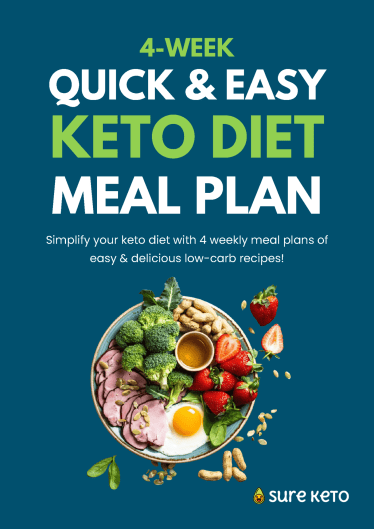How to Make a Keto Meal Plan
The keto diet can be difficult to stick to, especially if you're not prepared.
By planning out your meals in advance, you can ensure that you're eating the right foods and staying within your daily carb and fat limits.
Here are some steps to help you get started on creating a meal plan for your keto diet.
1. Determine your daily carb limit
The first step in making a meal plan for a keto diet is to determine your daily carb limit.
This will depend on your individual goals, activity level, and other factors.
A general guideline is to aim for 20 - 30 grams of net carbs per day.
You can use our free keto macros calculator to determine your specific carb limit.
2. Plan your meals and snacks
Once you know your daily carb limit, you can start planning your meals and snacks accordingly.
Here's a breakdown of what a keto meal should be composed of:
- Protein: Protein is an important macronutrient that provides the body with essential amino acids. On a keto diet, it's important to include a source of protein in every meal.
Good protein choices for a keto diet include fatty fish (like salmon and mackerel), grass-fed beef, and poultry. Aim for about 25-30% of your daily calories to come from protein. - Healthy fats: On a keto diet, healthy fats should make up the majority of your caloric intake. These fats help to fuel the body, provide essential vitamins and minerals, and keep you feeling full and satisfied.
Good sources of healthy fats on a keto diet include avocado, coconut oil, and olive oil. Aim for about 60-70% of your daily calories to come from healthy fats. - Vegetables: Vegetables are an important part of any healthy diet, and they can also be incorporated into a keto meal plan.
Non-starchy vegetables like leafy greens, bell peppers, and broccoli are low in carbohydrates and high in nutrients, making them a great choice for a keto diet. Aim to include a serving of non-starchy vegetables in each meal. - Condiments and seasonings: It's important to add flavor to your meals on a keto diet, and condiments and seasonings can help to do just that.
Healthy options include herbs, spices, and vinegar-based dressings. Avoid sugar-based condiments and seasonings, as they can quickly add up in terms of carbohydrate content.
3. Prepare a grocery list
After you have planned your meals and snacks, it’s time to make a grocery list. This will help you stay organized and ensure you have all the ingredients you need on hand.
Be sure to include a variety of keto-friendly foods and avoid foods that are high in carbs, such as grains, starchy vegetables, and sugars.
4. Prepare your meals in advance
To make following your keto meal plan easier, consider preparing your meals in advance.
This could involve cooking a large batch of food on the weekends and storing it in the fridge or freezer, or meal prepping individual meals for the week.
This can save time and help you stay on track with your keto diet.
Hack Your Meal Plan
If you're still not sure how to make your own meal plan, then you might want to check out the meal plan that we designed for keto beginners:
4-Week Quick & Easy Keto Meal Plan
Wrapping It Up
Overall, making a meal plan for a keto diet can help you achieve your health and fitness goals.
By determining your daily carb limit, planning your meals and snacks, preparing a grocery list, and preparing your meals in advance, you can set yourself up for success on your keto journey.
